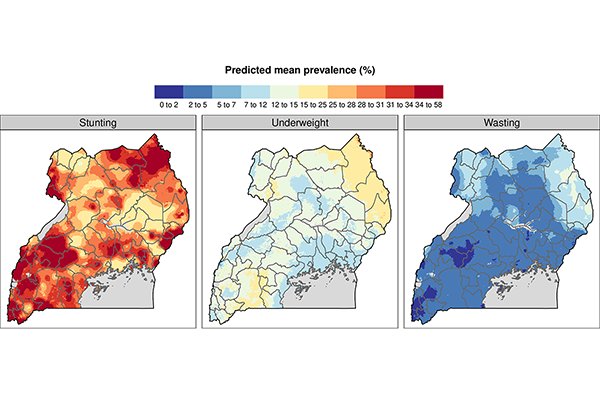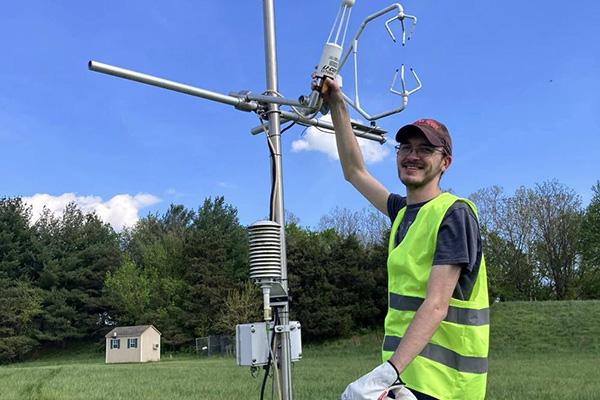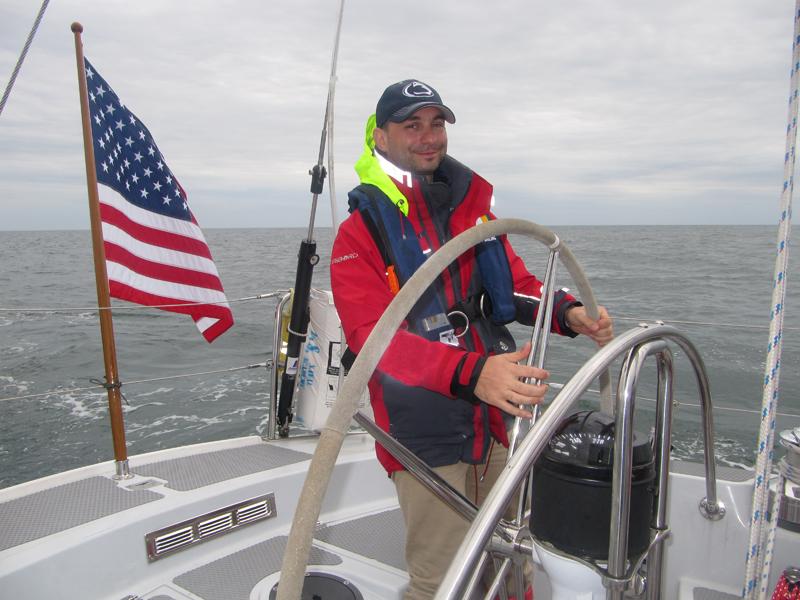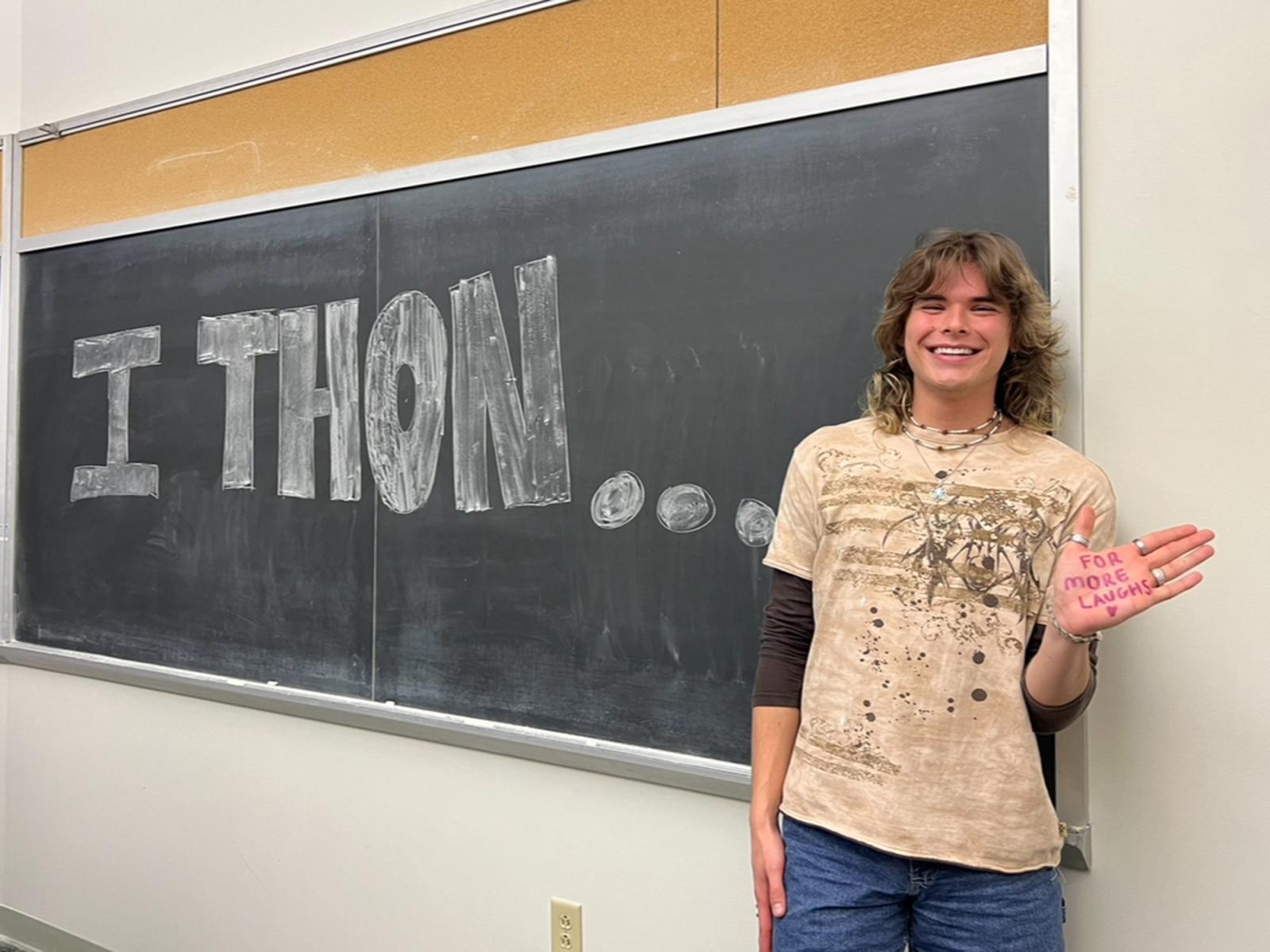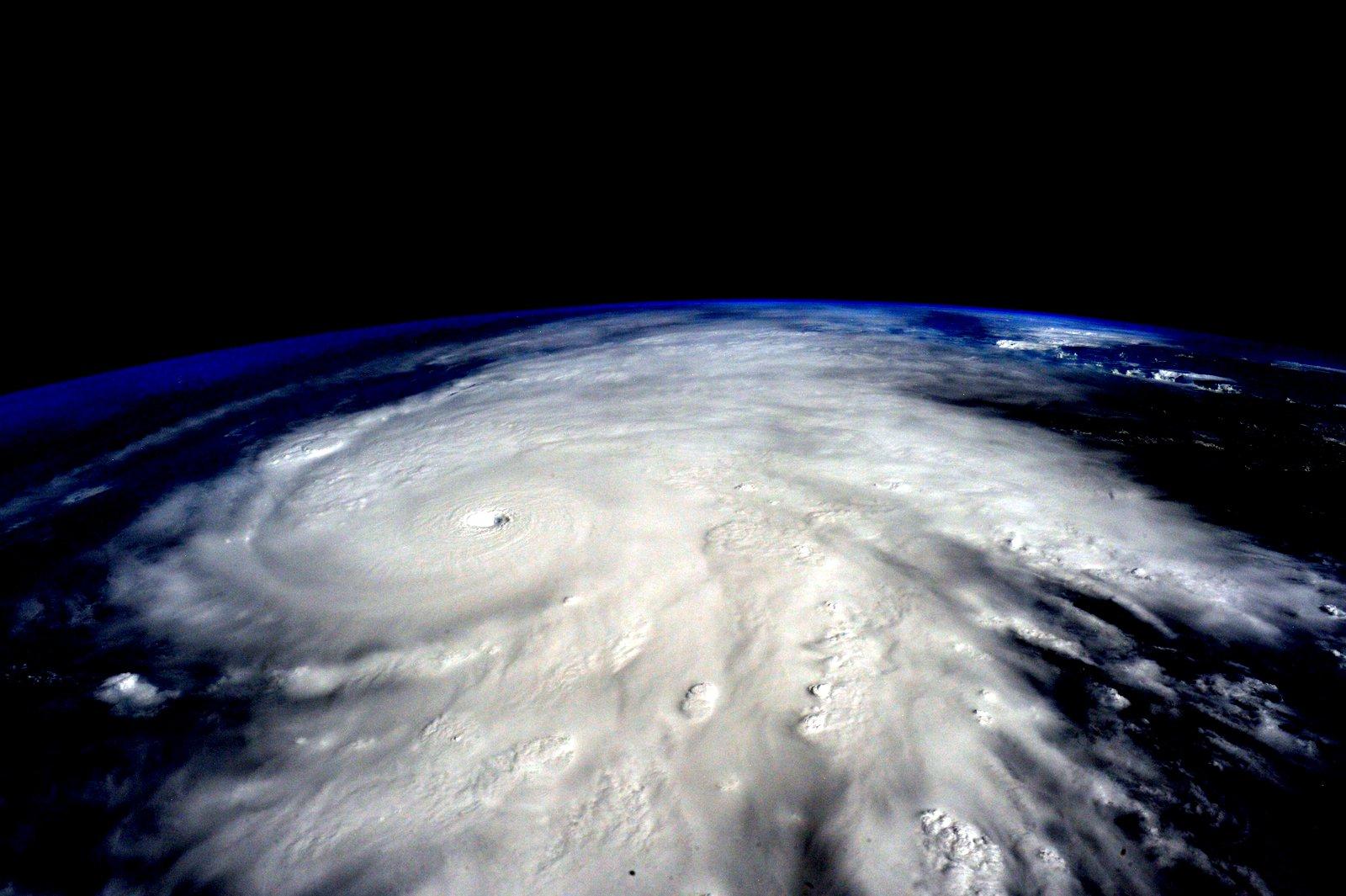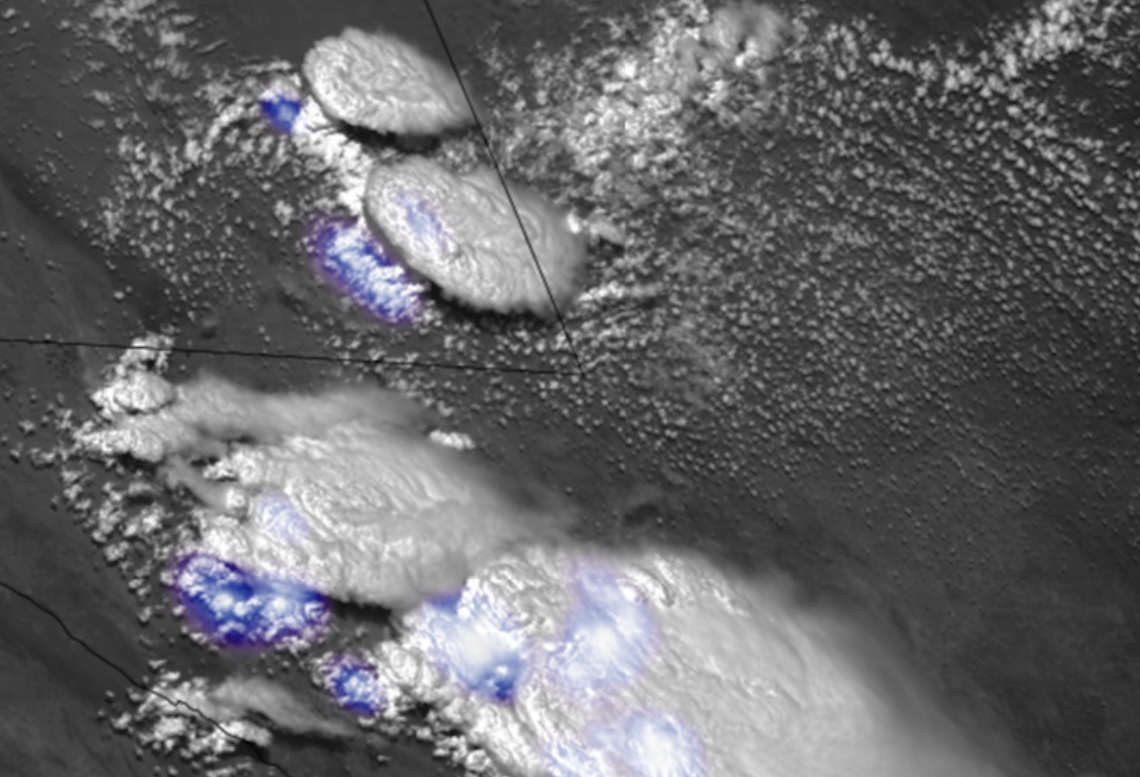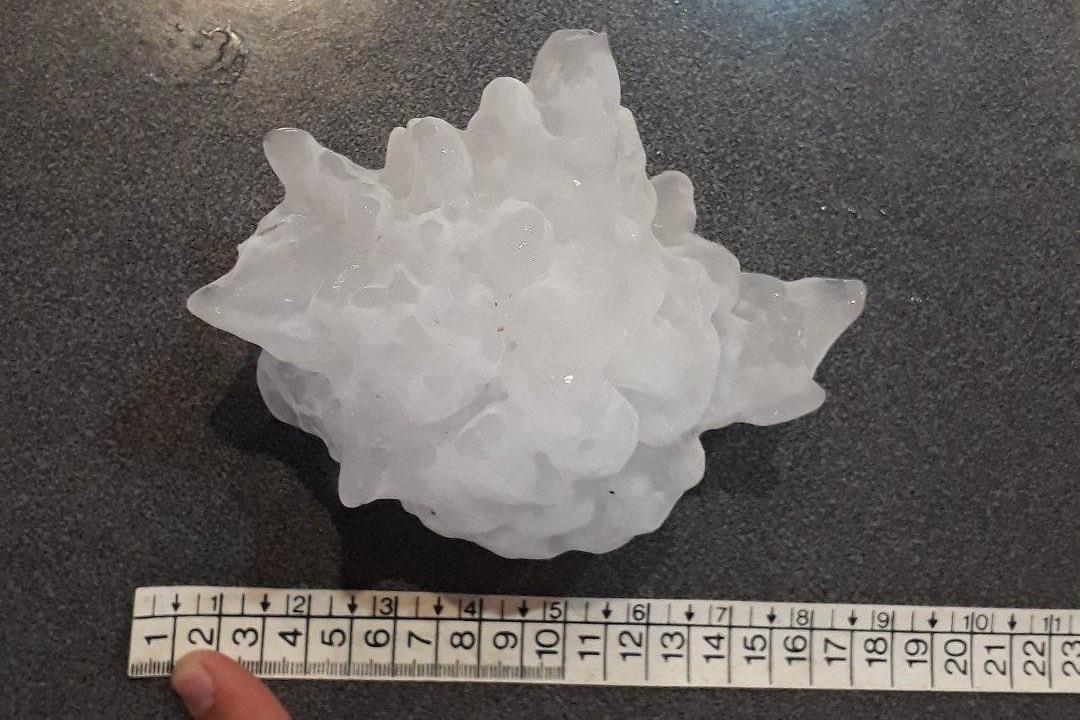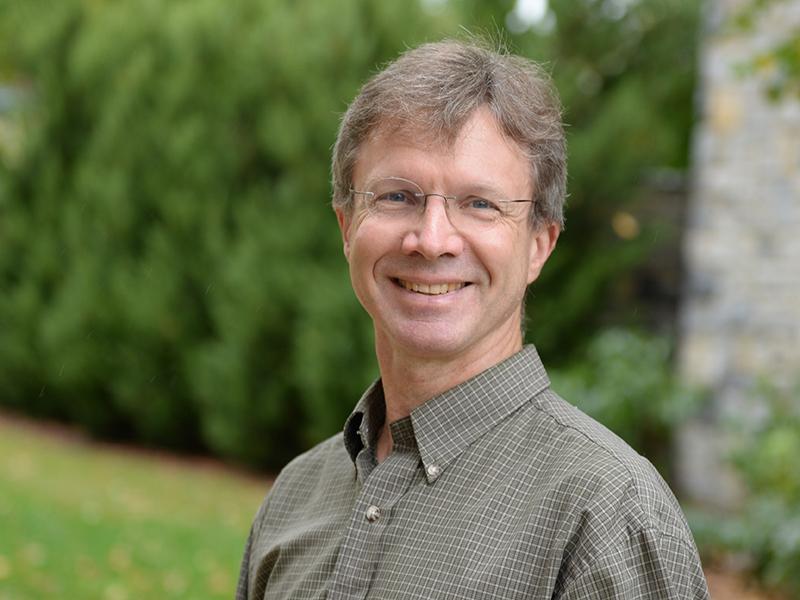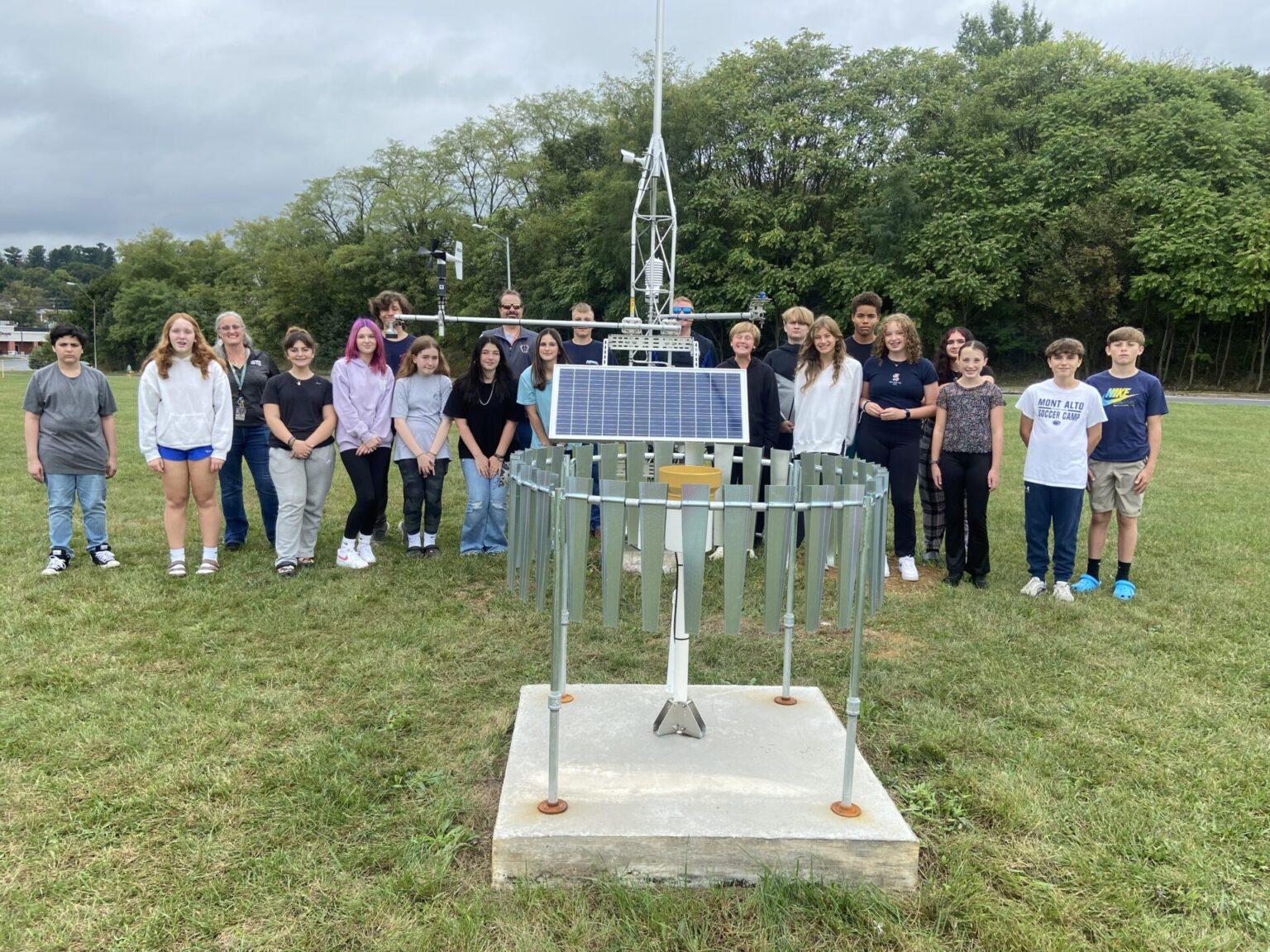News articles are listed below events.
UPCOMING EVENTS
- toMeteorology ColloquiumLow-Frequency Gravity Waves: What Are They and How Do They Affect MCSs?
- toKen Reeves Memorial Weather BriefingDepartment Head, Penn State Meteorology
- toHussey Commemorative Lectureship in MeteorologyAnatomy of a Storm: Considering Form and Function in Tropical Cyclone Research
- toQualifying ExamAssessing WRF Model Performance in Simulating Wintertime Bay Breeze Dynamics Over Baltimore
- toMeteorology ColloquiumTBA
PAST EVENTS
- toOral Comprehensive ExamAdvancing Our Ability to Model the Surface-Atmosphere Interactions in Urban Environments: Model Development Informed Through Observations and High-Resolution Simulations
- toKen Reeves Memorial Weather BriefingSenior Director, Forecast Operations, AccuWeather
- toKen Reeves Memorial Weather BriefingAssistant Chief Broadcast Meteorologist, AccuWeather
- toMeteorology ColloquiumResolving Aerosole-Complexity: How Particle-Resolved Modeling Improves Aerosole-Climate Understanding
- toKen Reeves Memorial Weather BriefingResearcher, Penn State University
- toMS Thesis DefenseProjecting Future Changes in Extratropical Transition of Atlantic Hurricanes in Earth System Models
- toMeteorology ColloquiumIntra-Urban Heat Variability in Baltimore City
- toKen Reeves Memorial Weather BriefingWarning Coordination Meteorologist, NWS State College
- toMeteorology ColloquiumSpring Break - No Colloquium
- toQualifying ExamAn Investigation of Subsiding Shells in Simulations of Tropical Thunderstorms
- toMeteorology ColloquiumThe Weather of the Gettysburg Campaign
- toKen Reeves Memorial Weather BriefingAssistant Teaching Professor, Penn State
- toMeteorology ColloquiumCoastal Tropical Cyclone Activity Under Climate Change
- toQualifying ExamA Hybrid Theory for the Dimensional Growth and Hollowing of Ice Crystals
- toMeteorology ColloquiumThe MONAN Program: Developing the Next Generation of Climate and Weather Forecasts for South America
- toPhD Thesis DefenseLand and Ocean Contributions to United States Summertime Precipitation
- toPhD Thesis DefenseEvaluation of Urban Atmospheric Boundary Layer Simulations with Ground-Based Doppler Lidar
- toKen Reeves Memorial Weather BriefingAssociate Professor, Penn State
- toMeteorology ColloquiumThe JCSDA Community Radiative Transfer Model (CRTM)
- toKen Reeves Memorial Weather BriefingGraduate Student, Penn State
- toMeteorology ColloquiumThe Tornado Outbreak of May 31, 1985: Looking Back at One of Pennsylvania's Deadliest Weather Events
- toKen Reeves Memorial Weather BriefingLead Meteorologist, NWS State College
- toMeteorology ColloquiumCan AI Weather Models Predict Out-of-Distribution Gray Swan Tropical Cyclones?
- toMeteorology ColloquiumThe Legacy of Dr. Warren M. Washington, the Climate Crisis, and the Changes in Late 21st Century Saharan Dust in North Africa
- toSpecial EventHilton New Orleans Riverside
- toPhD Thesis DefenseAssimilating NASA Impacts Data for 7 February 2020 Storm to Improve WRF Winter Cyclone Prediction
- toOral Comprehensive ExamEvaluating and Expanding Statistical-Dynamical Downscaling Methods to Improve Landfalling Tropical Cyclone Risk Assessment
- toOral Comprehensive ExamQuatifying Electrical Discharges and Their Impacts
- toMeteorology ColloquiumU.S. Offshore Wind Metocean Conditions Characterization
- toOral Comprehensive Exam"Application of Advancements in Observation of the Planetary Boundary Layer Using Dual-Polarization Radars"
- toOral Comprehensive ExamApplication and Analysis of a Novel Ice Crystal Trajectory Growth (ICTG) Model to a Tropical Cyclone Eyewall
- toMeteorology ColloquiumImproving Mesoscale Forecasts of Winter Precipitation: Results from Stochastic Physics Experiments and Field Campaign Observations
- toOral Comprehensive ExamImproving the Understanding of Snow Particles in the Eyewall and Rainbands of Hurricane Dorian Using Microwave Ice Scattering Databases for Various Microphysics Schemes
- toOral Comprehensive ExamAssessing Urban Greening and Albedo Modification as Strategies to Mitigate Heat-Related deaths in Baltimore, Maryland
- toMS Thesis DefenseRelating Polarimetric Radar Measurements to Quasi-Linear Convective System Cold Pool Properties and Damage Potential
- toOral Comprehensive ExamAdvancing Methods for Source-Specific Quantification of Carbon Dioxide Fluxes in Urban Settings
- toMeteorology ColloquiumTop-Down and Bottom-Up Development of Climate Models
- toPhD Thesis DefenseAssessing the Role of Parameterized Turbulence on Tropical Cyclones and the Mean Climate in the Community Earth System Model
- toKen Reeves Memorial Weather BriefingPhD Student, Penn State Meteorology
- toMeteorology ColloquiumIntegration of Vantage Points, Programs, and Approaches for Space-Based Earth Remote Sensing
- toKen Reeves Memorial Weather BriefingThere will be no briefing on Monday, November 11th
- toMeteorology ColloquiumIce Crystal Growth at Cirrus Temperatures: Measurements and New Theories
- toKen Reeves Memorial Weather BriefingPresident, Campus Weather Service
- Meteorology ColloquiumAerosols and Their Influence on Clouds
- toKen Reeves Memorial Weather BriefingHydrologist/Hydrometeorologist
- toKen Reeves Memorial Weather BriefingLecturer, Penn State Meteorology
- toSpecial EventSharing Scientists' Stories: A Conversation with Meteorologist Biographers
- toMeteorology ColloquiumWeather and Climate Simulation with State-of-the-Art Physics-Informed AI Algorithms
- toKen Reeves Memorial Weather BriefingResearcher, Penn State Meteorology
- toMeteorology ColloquiumTropical Cyclones: Climate Change, ENSO and the Tropical Pacific
- toKen Reeves Memorial Weather BriefingLead Meteorologist
- toOral Comprehensive ExamInvestigating the Dimensionless Parameters Controlling Horizontal Convective Roll Aspect Ratios Over Land
- toMeteorology ColloquiumDevelopments in Quantifying Uncertainty from Bayesian Convolutional Neural Networks as Applied to Synthetic Passive Microwave Retrievals
- toQualifying ExamThe Scale Dependent Practical Estimates of Convection Velocity in Turbulent Canopy Flows
- toMeteorology ColloquiumAerosols and Droplets: Fundamental Particles in our Evolving World
- toThesis DefenseInvestigating the Characteristics and Dynamics of Convective Updrafts in Tropical Cyclone Rainbands
- toKen Reeves Memorial Weather BriefingAssistant Teaching Professor
- toTarbell Lecture in MeteorologyThe Earth System and its Many Scales: A View from Biosphere up to Atmosphere and Back Down Again
- toKen Reeves Memorial Weather BriefingM.S. Graduate Student, Penn State Meteorology
- toMeteorology ColloquiumHuman Influence on the Large-Scale Atmospheric Flow in Recent Decades
- toKen Reeves Memorial Weather BriefingAssistant Teaching Professor, Exec. Producer of Weather World
- toMeteorology ColloquiumHuman Footprints in the Sky: Exploring the Impact of Land Use on the Boundary Layer and Beyond
- toOral Comprehensive ExamImproving Surface Flux and Boundary Layer Modeling with Land Surface Remote Sensing for State Air Quality Planning
- toOral Comprehensive Exam"Leveraging Rossby wave breaking to understand mechanisms generating extreme weather in past and future climates"
- toOral Comprehensive Exam"Examining Recent Surface Temperature Trends"
- toOral Comprehensive Exam"Assessing climate model applications at multiple spatial scales"
- toThesis Defense"Laboratory Measurements of Small Ice Crystal Growth Rates at Low Temperatures"
- toOral Comprehensive Exam"Improving a Diabatic Lagrangian Analysis Technique with Observations from Balloon-borne Sondes to Explore the Relationship Between Supercell Thermodynamics and Baroclinically Generated Circulation"
- toMeteorology Colloquium"Weather Warning Outreach and Communication in the 21st Century"
- toSpecial Event6-8 pm via Zoom
- toOral Comprehensive Exam"Convection Initiation over Coastal Regions: Supporting Environment and Physical Causes over Coastal Texas"
- toMeteorology Colloquium"What Sets the Latitudinal Precipitation Distribution?"
- toSpecial EventVirtual Career Day - Spring 2022 (March 22, 6-8 PM, via Zoom)
NEWS
The Penn State community is mourning the loss of Jenni Evans, professor emerita of meteorology and atmospheric science and director emerita of the Institute for Computational and Data Sciences, who died April 3 in her Boalsburg, Pennsylvania, home. She was 63.
Rainfall and long-term water availability in a region before a woman becomes pregnant and during pregnancy predicted future growth outcomes of children in Uganda, according to new research led by a team from the Penn State Health Milton S. Hershey Medical Center and the Penn State College of Medicine. Women living in an area that did not receive adequate rainfall or experienced drought were more likely to give birth to children who don’t grow at the expected rate for their age between birth and age five. Children who are under-nourished and behind in their growth are more susceptible to infections and may experience cognitive, physical and metabolic developmental impairments.
“There are so many ways to engage with the student body and support students when it comes to fostering a culture of belonging across STEM and academia,” Prince said. “There’s a lot of work to be done, but luckily we have a network of dedicated people. We’re working to make this culture a lasting and integral part of the academic experience.”
Guido Cervone, Penn State Institute for Computational and Data Sciences (ICDS) interim director and professor of geography and of meteorology and of atmospheric science, was recently named chair of the American Geophysical Union (AGU) Annual Meeting program committee. As chair, Cervone will organize and coordinate AGU's Annual Meeting, which provides a platform for experts to share their scientific discoveries, and present their work through workshops, panels and townhalls.
Luke Snyder, a junior in the College of Earth and Mineral Sciences, volunteers for THON and many other organizations at Penn State. He said Penn State really helped him come out of his shell and allowed him opportunities for personal growth.
Penn State researchers, including Romit Maulik, assistant professor in the College of IST, and Steven Greybush, associate professor of meteorology, will use a grant from NASA to improve atmosphere and ocean forecasts by incorporating AI and satellite data into current forecasting models.
Led by Steven Greybush, researchers will incorporate computational tools along with traditional science to better understand and predict weather
A new approach for modeling hailstorms that uses more realistic hailstone shapes could improve our understanding of hazardous weather, according to a team led by scientists at Penn State.
The Penn State Institute of Energy and the Environment has named Kenneth Davis as Person of the Year for 2024.
A PA Environmental Monitoring Network station, installed by Penn State Department of Meteorology and Atmospheric science researchers earlier this Fall, has been enthusiastically embraced by the school district. Waynesboro Area School District (station installed at Middle School) in Franklin County is already using data from the site within their science and technology classrooms! This is one of our mesonet expansion sites funded by the PA Emergency Management Agency, with 50 total sites planned to be installed and operating by Summer 2026.



